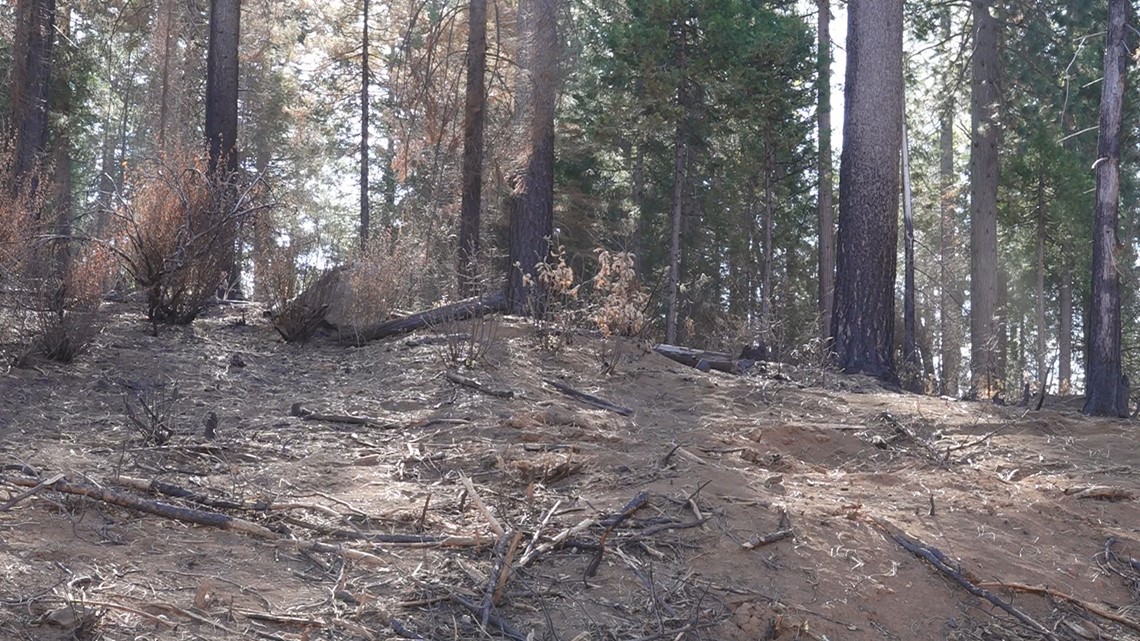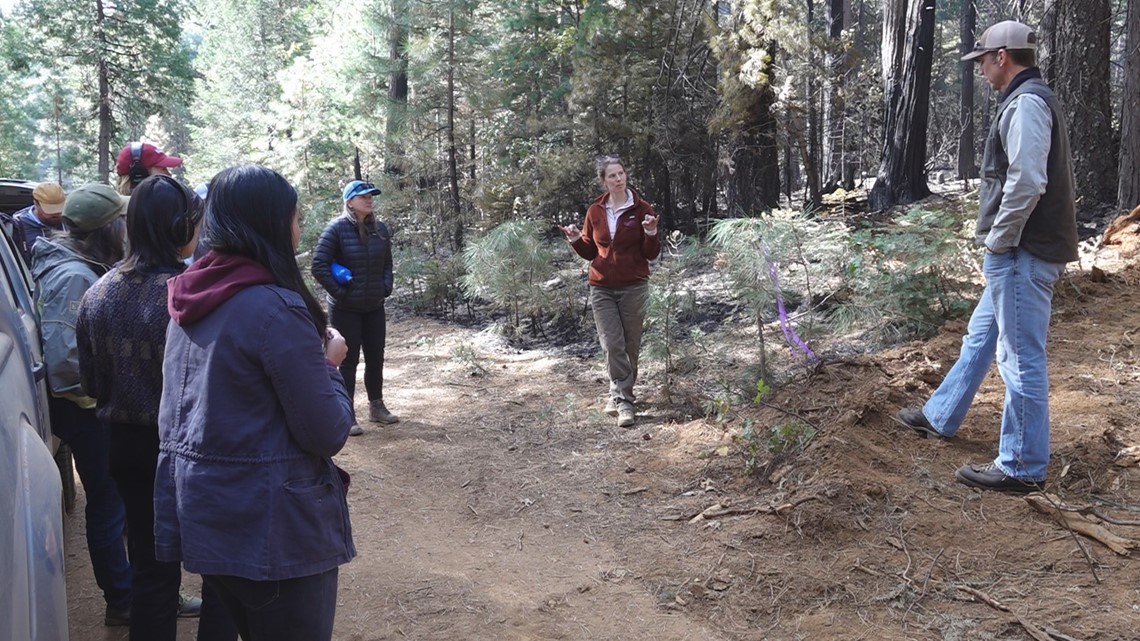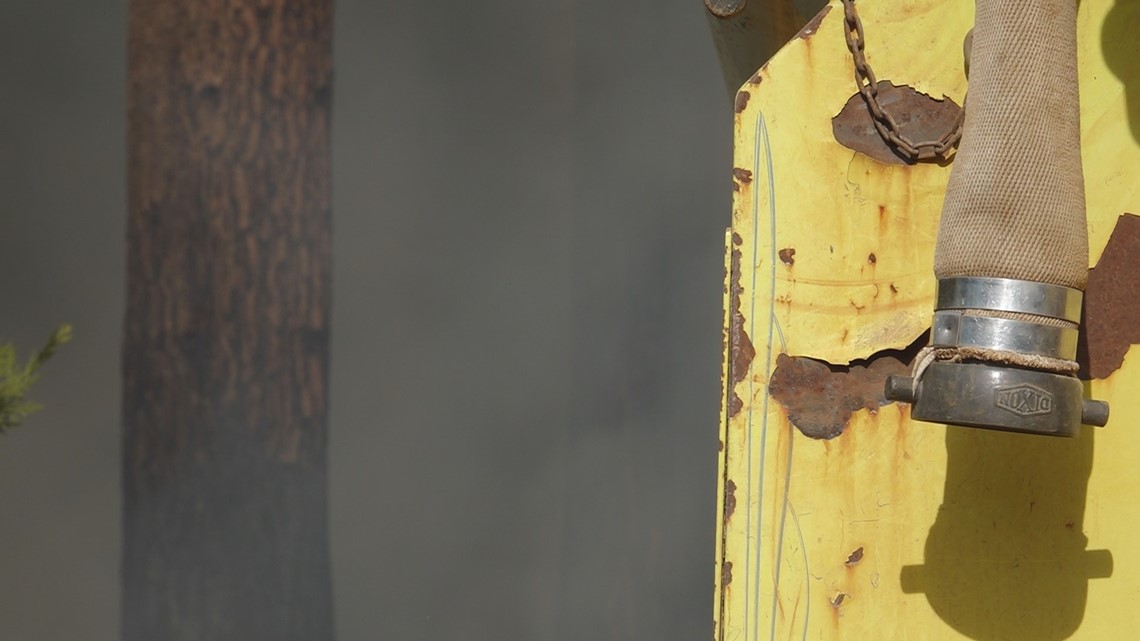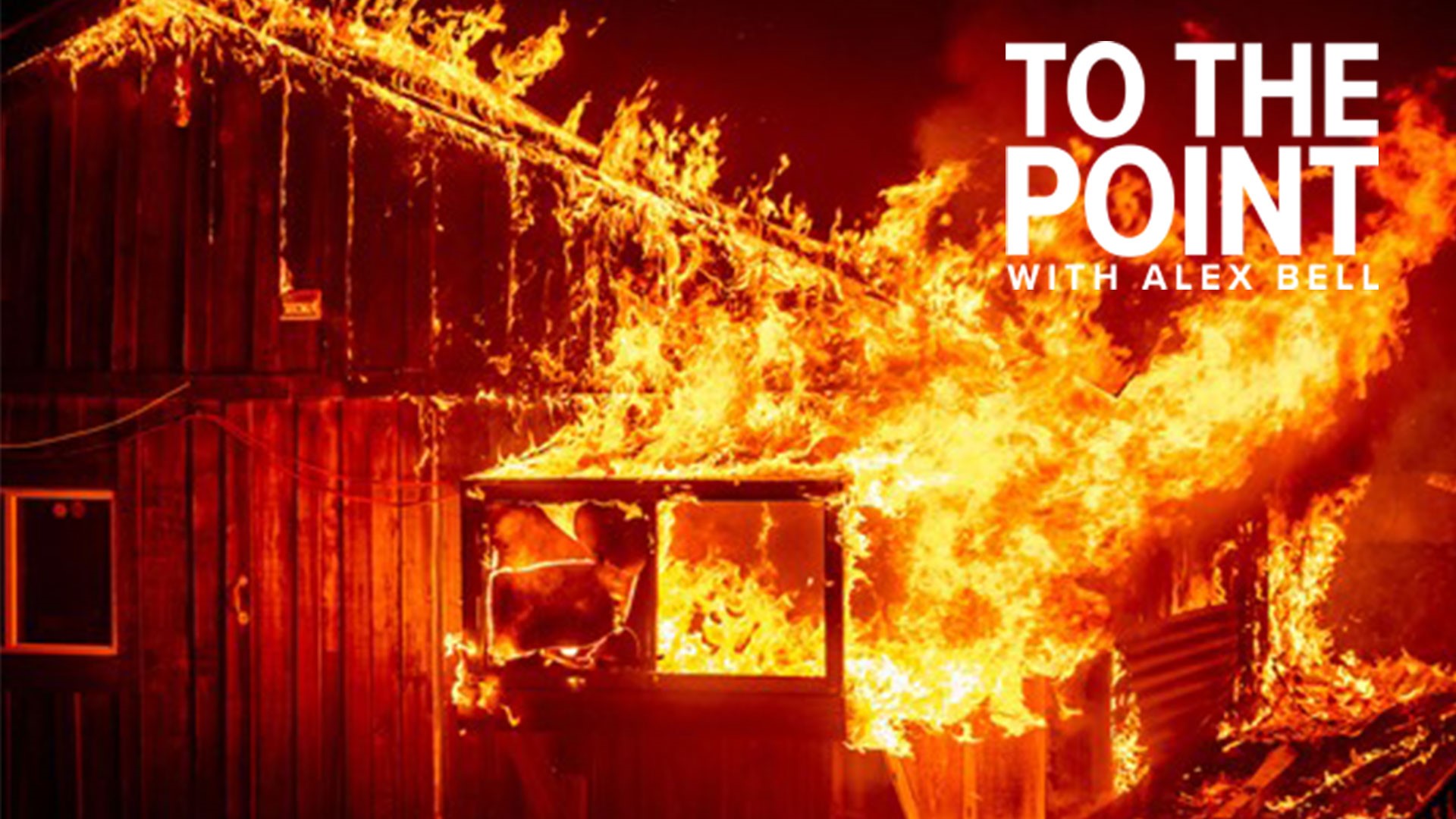GEORGETOWN, Calif — High up in the Sierra, just outside of Georgetown, lies the UC Berkeley Blodgett Experimental Forest. That's where you'll find researchers like Ariel Roughton, a research manager with Berkeley Forests.
“It’s a really great place to come and talk about different forest structures and how they responded to wildfire," said Roughton.
Last September, the Mosquito Fire burned through a portion of Blodgett, and UC Berkeley researchers were eager to see the aftermath.
I was invited at the end of October to tour portions of the Blodgett Forest with a small group of other journalists. It was led by several experts in forestry and fires, who were excited to share with us what they had learned the month prior.
The wildfire hit a densely packed section of trees – called a stand – that was only 20- to 30-years-old. When the Mosquito Fire hit the stand, the fire behaved in a very high intensity manner.
“And we really hadn't done a whole lot out there. So we've had 20 to 30 years of time for fuel to accumulate on the ground here," Roughton explained. "We haven't done anything to treat the fuels on site.”


As it burned through this stand, the Mosquito Fire killed everything from the forest floor to the canopy. Although fires have always been part of the western forest ecosystem, high intensity fires like this one are not beneficial to the overall health of the forest, nor the wildlife that call it home.
High intensity burning even hinders the resiliency of the forest, with much longer periods of time needed for new plant growth to begin.
But when the Mosquito Fire moved into a different stand – one that had been managed via manual harvesting and prescribed burn – the fire behavior changed.
"It still killed some of these trees along the edge," Roughton was quick to point out. "But then it dropped to the ground and, we’re assuming, became more of a surface fire. And this is ultimately where they were able to put a containment line in, in this area that we had treated with prescribed fire.”


We often talk a lot about fuel dryness during fire season, but that is only one aspect of fire danger and fire behavior. The different types of fuels and how they are managed also matter.
There are three primary types of fuel. There are the canopy fuels, which are the tops of trees.
Further down are the ladder fuels, such as small to moderate sized trees and lower branches of larger trees. Generally anything from 6 inches off the ground to 6 feet.
Then there are surface fuels. That's needles that have fallen, fallen branches, shrubs, and even small trees.
Between the different weather conditions – such as temperature, humidity, and winds – the topography of an area and the types of fuels, is it even possible to say that this change in the behavior of the Mosquito Fire was due to the change in fuel management?
"We can't really say with certainty," explained Brandon Collins, a researcher with the U.S. Forest Service and one of our tour guides. "But we have to put these pieces together after the fact, looking at both the effects of the fire, knowing the history of stand and the fuel conditions. So I think we can say with pretty good confidence that the fuel conditions really dictated that.”
Roughton agrees.
“I think the surface fuel is what we're seeing is really, really key. Treating that surface fuel, anything that we can do, which, really, fire is the only way you're going to remove that surface fuel, but doing anything to treat the surface fuel is going to have an impact on fire effects," said Roughton.
Yet it's not that easy. The 20- to 30-year-old stand the Mosquito Fire first burned through when it entered Blodgett was so densely packed that even going in to do a prescribed burn would've been risky. The density also makes it difficult to get in there and thin the forest by removing trees by hand.
Young, packed stands like this are very common on industrial land. It's a huge fire risk, but the price of thinning the young forest is just too much. It can cost upwards of $1,500 an acre with no return to remove the young, non-valuable trees.
“Obviously, it's a problem from a fire risk standpoint, but it's also a problem of what we can do with that." Collins explained. "And we don't have a lot of options without spending tons and tons of money. So, in a way, you kind of look at this as just kind of biding your time, like, you know, gambling a little bit, knowing it's a very vulnerable condition. But the cost of trying to mitigate that is just too high.”
And this is only on industrial land. Federal, Forest Service and National Park lands are even tougher to manage because the issue of burning and/or commercially removing profitable trees is a controversial issue; even when it's in the interest of the public and the forest itself.
Another of our tour guides that day, Kristin Shive with the UC Cooperative Extension, specializes in forest and fuels management. She spent time working with Yosemite National Park, and knows firsthand just how controversial removing trees from federal lands can be, yet she believes we shouldn't automatically say no to selling some federally owned trees.


"There's tons of land, a lot of Forest Service, land, etc. where there are trees big enough that can help pay for the restoration," Shive said. "But we have to be okay with harvesting and processing lumber. And that sometimes can be controversial, and people don't want to think about on public lands, like using our lands that way. But I think there are ways to do it with what I would say responsibly with like, even a conservation and restoration bent.”
Naturally, I asked the group of fire and forest experts if it all comes down to funding. Based on their previous answers, I was surprised to hear a resounding "not exactly." It’s an infrastructure and personnel issue too.
“Funding is a huge piece of the puzzle. But it's not the only thing." Roughton commented. "It's also where the funding goes, right? It's not just giving a landowner – you could give me all the money in the world, and there are certain things I could not do here because the infrastructure doesn't exist to do it and the workforce doesn't exist to do it.”


Slowly, the state and even the federal government are coming around to the idea that managing our forests, whether with controlled burns or manual tree removal, is a good idea. And while we're a long way from solving the problem, money being offered up by the State of California is a sign that we're headed in the right direction.
Collins explains that there's consistently more money available via grants from the state for forest management, and "once you get it, it can really help." But there's a big question mark.
Millions and millions of acres across California need work to get them to a place where – like Blodgett – they might help lower the intensity of future wildfires. A problem Brandon is keenly aware of. "I mean, can we as taxpayers fund that, like over the many millions of acres that need it?”
WATCH ALSO:



















